
In this online book, Traci Gardner defines the process of standards-based writing assignment design and assessment with a research-based approach.
- Subject:
- Professional Learning
- Material Type:
- Reading
- Author:
- WAC Clearinghouse
- Date Added:
- 06/08/2023

In this online book, Traci Gardner defines the process of standards-based writing assignment design and assessment with a research-based approach.

This is an example of the Genre Planning Chart you will submit for Evidence of Preparation and Planning.
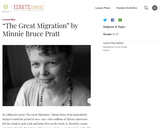
This lesson plan is the fifth in the "Incredible Bridges: Poets Creating Community" series. It provides an audio recording of the poet, Minnie Bruce Pratt, reading the poem "The Great Migration." The companion lesson contains a sequence of activities for use with secondary students before, during, and after reading to help them enter and experience the poem.

In this English Journal article, Heller suggests that teachers’ approach to writing assignment design and response should focus more on a response cycle that prioritizes writing as a process rather than as a product. He offers suggestions for teachers to make this shift in their planning and teaching.
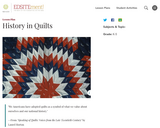
The lessons in this unit are designed to help your students recognize how people of different cultures and time periods have used cloth-based art forms (quilts) to pass down their traditions and history.

In this Cult of Pedagogy podcast, Jennifer Gonzalez guides teachers to consider how to better define and align assessment criteria with their identified learning goals so that assessment is used to measure student learning progress in writing.

In this Writers Who Care blog post, Ellen Foley offers strategies through a list of Do’s and Don’ts as teachers develop and implement their approaches to giving feedback to student writers. Be sure to check out all of the hyperlinks to see the research and additional resources that support the practices shared here.

Successful personal essays connect with the reader through detail and specificity -- by zooming in on single moments and then exploding them with meaning. In this video, we’ll talk about exactly why and how writers explode moments into statements of deep significance in personal narratives.

Punctuating different kinds of titles is super back-to-basics, but it’s something student writers often mistake. In this video, we’ll talk about why we punctuate titles the way we do, consider broader rules that govern title punctuation, and learn the basics. This video is perfect for assigning to small groups or individual students who need some refreshing!

Inspiration and ideas to encourage educators to expand the possibilities when it comes to any genre they teach.

This article assembles free resources from the Icebergs and Glaciers issue of the Beyond Penguins and Polar Bears cyberzine into a unit outline based on the 5E learning cycle framework. Outlines are provided for Grades K-2 and 3-5.
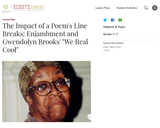
Students will learn about the impact of enjambment in Gwendolyn Brooks' short but far-reaching poem "We Real Cool." One element of this lesson plan that is bound to draw students in is a compelling video of working-class Bostonian John Ulrich reciting the poem.
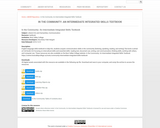
An English language skills textbook to help ESL students acquire communication skills in the community (listening, speaking, reading, and writing) The book is aimed at CLB levels 5/6 focusing on intercultural skills and essential skills: reading text, document use, writing, oral communication, thinking skills, working with others, and computer use.
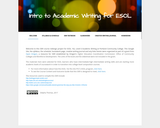
The materials here were selected for ESOL learners who have intermediate-high intermediate writing skills and are starting more "academic" levels of course work in order to transition into college-level composition courses.

This article describes how primary school teachers and their school technology specialist use classroom blogging to engage children in reading and writing.

In this Cult of Pedagogy podcast, Jennifer Gonzalez defines three different approaches to designing rubrics to assess student work and provides examples of each, while discussing the benefits and drawbacks of the different models. Teachers may find these resources useful as they consider how they use their rubrics for response to and/or assessment of student writing.

This article gives background information on the Iditarod race in Alaska and shows how the race can be used in Grades K-5 classrooms to incorporate science, geography and language arts. The author provides links to resources that involve reading expository tests and writing assignments as well as working with real-time data. The article appears in the free, online magazine Beyond Penguins and Polar Bears.
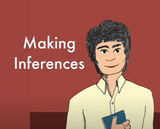
Learn how to make inferences in literature, nonfiction and real life, and to support those inferences with strong, reliable evidence.
An inference is just coming to a logical conclusion from whatever evidence you have. It’s one of the most valuable thinking skills you can learn.
The ability to make inferences is one of the things that make a person what we call “smart.” And we say the person who can’t make inferences is “a little slow on the uptake,” right?, because other people figure out what’s going on more quickly than he or she does. We have to spell things out explicitly for that person.
So, when your teacher says he or she is going to help you learn how to make good inferences, imagine in your head that he or just said that you’re going to learn how to be smart today. You’re going to learn how to think, because, ultimately, that’s what making inferences is all about.

Reading Emily Dickinson's letters alongside her poems helps students to better appreciate a remarkable voice in American literature, grasp how Dickinson perceived herself and her poetry, and perhaps most relevant to their own endeavors consider the ways in which a writer constructs a "supposed person."
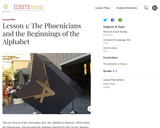
This lesson is about the Phoenicians, who invented the alphabet inherited by the Greeks, Romans, and eventually, us.